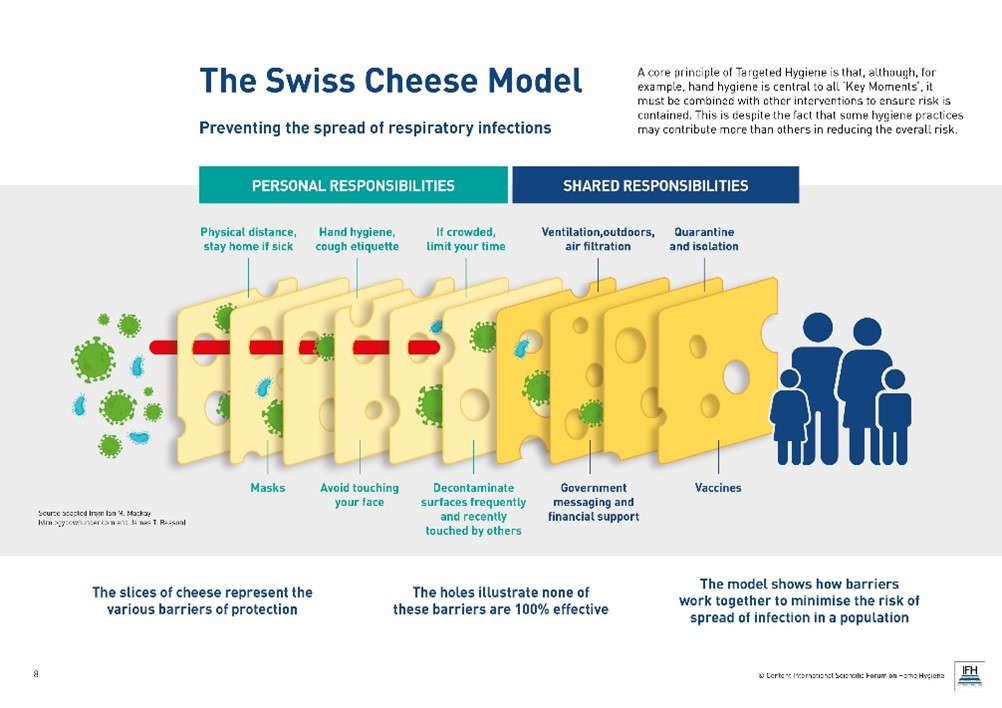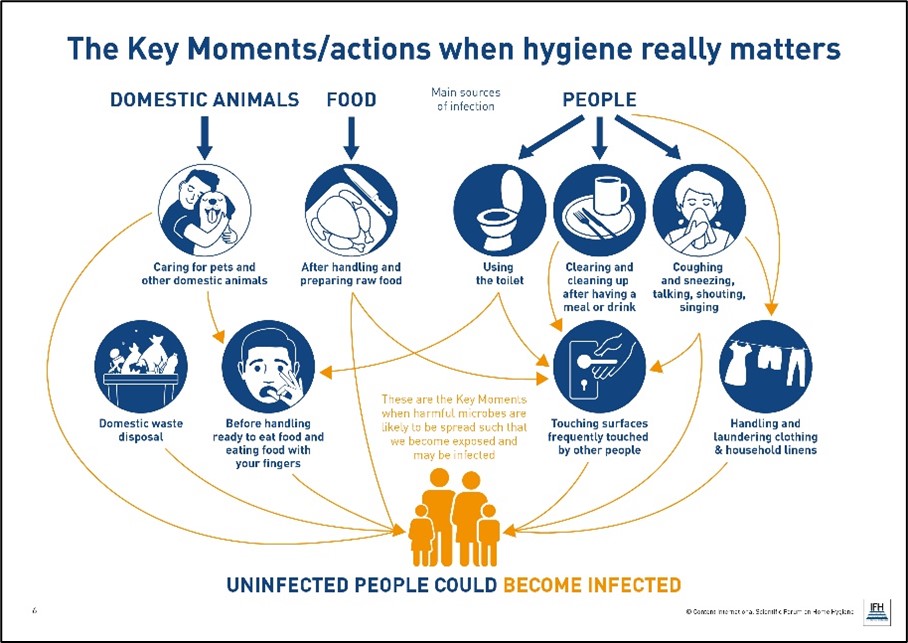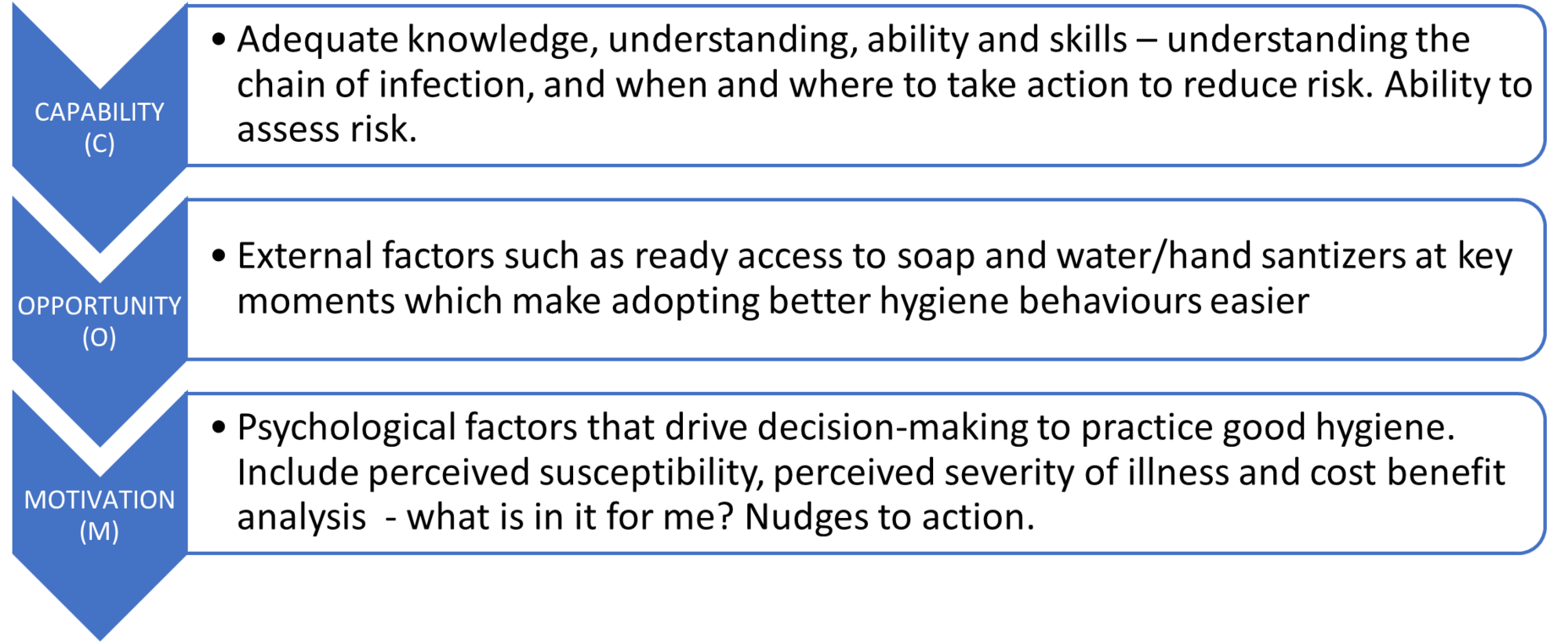Hygiene resilience in public health – time for a fundamental rethink
Professor Sally Bloomfield, International Scientific Forum on Home Hygiene, Hon. Fellow, Royal Society for Public Health
| SC Johnson
Taking onboard lessons from the COVID-19 pandemic, Professor Sally Bloomfield outlines a three-point strategy to enhance our hygiene resilience.
Today the APPG for the Cleaning & Hygiene Industry launches an Inquiry entitled “Embedding Effective Hygiene for a Resilient UK’. This is welcome as part of the important process of multisectoral stakeholders considering the lessons of COVID in the run-up to the national Inquiry. However, a radical rethink of the way we enhance resilience in public hygiene in the future is needed.
In 2021, the UK Government published its vision for a National Health Resilience Strategy a “whole of society approach” to better-equip the UK’s adaptation to uncertainty and adversity, including future epidemics and pandemics. To achieve this, building “hygiene resilience” - including tackling antimicrobial resistance (AMR) - is fundamental. The pandemic prompted recognition that hygiene behaviour in public places - workplaces, schools, public transport, hospitality - is as important as it is in homes. However, the UK 5-year AMR action plan acknowledges “when it comes to preventing infectious disease, governments can only do so much, the public have a huge role to play”. To achieve the necessary fundamental changes in behaviour, a new three-point strategy for resilient hygiene in public health is required.
1. Defining leadership
A leadership team with sole responsibility for Hygiene in Home and Everyday Life (HEDL) must be established, with authority and investment to drive change. The various elements of hygiene - food safety, healthcare, AMR & pandemic preparedness - must be unified, and communicated in user-centred rather than agency-focused language. This team must be multi-disciplinary and foster collaboration with and across the hospitality, cleaning and other industries to ensure shared responsibility. Government must engage the public to practice good hygiene behaviour in public spaces as a continuum of such behaviour in their homes, and premises’ facility managers must both adhere to defined high hygiene standards in their premises and enable and encourage the public to adopt good hygiene practice within them.
2. Adopting a Targeted Hygiene approach
We need to move away from clinical approaches to managing HEDL and adopt risk-management approaches, now accepted as a practical, effective approach to developing public health measures. Like other policies in respect of hazardous agents such as chemicals, allergens, etc., HEDL hygiene must focus on reducing population exposure - in this case to harmful microbes. Hygiene is not about trying to eradicate microbes from homes and public spaces; it is about individual and collective behaviours, carried out in daily life, aimed at reducing exposure to acceptable levels. Risk management recognises that no single behaviour is 100% effective, but that interventions like social distancing, mask wearing, ventilation and hand and surface hygiene combine for maximum impact on community infection rates – as summarized in the “Swiss Cheese” model:

The International Scientific Forum on Home Hygiene has developed a risk-based approach called ‘Targeted Hygiene’, which considers hygiene as it is experienced in our homes. The model identifies nine ‘Key Moments’ in daily life when harmful microbes - infectious bacteria, viruses etc. – can spread, leading to exposure and infection. It communicates hygiene actions in their natural sequence; identifying the moments when hygiene is important - handling raw food, using the loo etc. - highlighting the places where we accordingly need to act - hands, surfaces etc. - and identifying how to practice hygiene then - handwashing, surface cleaning, mask-wearing etc.

This approach works equally in public settings; Targeted Hygiene was applied to control transmission of COVID-19 and other infections in public areas at 2021’s COP26 summit in Glasgow and at the 2022 Birmingham Commonwealth Games.,
3. Improving public understanding and achieving behaviour change
Polling consistently reveals widespread public misunderstanding about hygiene. Public perception of risk centres on the belief that visible cleanliness determines whether germs are present. Poor understanding of when, where and how to practice hygiene results in behaviours which deliver little benefit. This misunderstanding extends outside the home: during the pandemic, spraying outdoor surfaces and ‘fogging’ and deep cleaning of public spaces was thought to create ‘COVID secure’ spaces. Such untargeted behaviour is both ineffective and conflicts with sustainable use of chemical products.
Early in the pandemic, government advice urged “wash your hands frequently” - but lacked guidance on when and why to do so. Consequently, people adopted unnecessary practices in situations of low risk for the spread of COVID. A recent poll showed that 31% incorrectly thought they could be infected through their hands’ skin – superfluous handwashing based on this may have led to reported skin problems, discouraging people from practicing hand hygiene when really necessary. 49% reported using antibacterial cleaners at home, and 57% said homes should be “deep cleaned” after someone present had been infected.
Newly-available frameworks such as the Health Belief and COM-B models for changing hygiene behaviours, together with a Targeted Hygiene Framework provide us with the tools to both achieve behaviour change and ensure that adopted behaviours are effective and sustainable in protecting against infection exposure.
THE COM-B MODEL OF BEHAVIOUR CHANGE

Conclusion
From the 1970s, when experts predicted the end of the era of infectious diseases, 2020 brought a pandemic with six million reported deaths, long-term serious health problems, and global disruption to public and economic life. To develop hygiene resilience, we need a radical rethink which assigns clear accountability for delivery, takes advantage of new scientific approaches to hygiene and behaviour change and rejects outdated approaches, myths and misunderstandings
